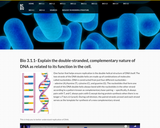
This webpage provides resources, including a link to a virtual PCR lab, to aid student understanding of the structure and function of DNA.

This webpage provides resources, including a link to a virtual PCR lab, to aid student understanding of the structure and function of DNA.

In this lesson, students identify the primary components in a DNA structure and describe the role of DNA in trait inheritance.
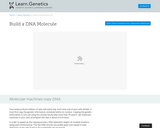
Students practice matching the nitrogenous base pairs of the DNA molecule.
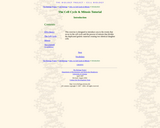
This exercise from The Biology Project is designed to introduce students to the events that occur in the cell cycle and the process of mitosis that divides the duplicated genetic material, creating two identical daughter cells. It includes tutorial readings and multiple choice questions to test students' knowledge.

This brief video clip describes and explains the chemical structure of a DNA molecule.

Students are asked to crack a code of different sequences of letters using the messages that those sequences encode. In each of the first three steps, each team is given a different set of letter sequences and corresponding messages. At each step, they will need to re-evaluate their conclusions from the previous steps, and modify their solution to the code. All groups will be working to crack the same code, using different examples. Students should focus on finding patterns and relationships. The crux of the activity is the existence of the code rather than the details of transcription and translation, which can be addressed in subsequent lessons.
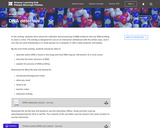
Students learn about the collection and processing of DNA evidence and use DNA profiling to solve a crime. The activity is designed for use on an interactive whiteboard with the whole class, and it can also be used individually or in small groups at a computer or with a data projector and laptop.

Students will complete a virtual lab on DNA mutations. Mutations involve a physical change to genetic material that results in the abnormal encoding of protein sequences. The students will complete mRNA and protein sequences based on the information provided. The students will identify the number of amino acids changed and how they think this mutation will impact the organism.

The task has two parts. Part 1 is answering questions about DNA replication to ensure that students can construct their own understanding of DNA replication, and the second part is to create a product modeling DNA replication. This task can be used as an introduction to DNA and protein synthesis or before the subject is taught so that the students can develop their own understanding and questions about the role and process of DNA replication. This lesson was developed by NCDPI as part of the Academically and/or Intellectually Gifted Instructional Resources Project. This lesson plan has been vetted at the state level for standards alignment, AIG focus, and content accuracy.

This lesson introduces students to the genetic information stored in DNA within the human cell nucleus.

This is a text resource that explains the process of DNA Transcription in easy to understand language. It is accompanied by several images.

In this lesson, students will create a model of the DNA double helix and discuss differences between DNA and RNA.

In this lesson students will learn practical applications of DNA profiling and the role it plays in today's forensic science. DNA extraction is a fundamental concept in the field of forensics and biotechnology. Students should have previous knowledge of the contents in DNA and RNA. Students will develop a greater understanding of what DNA does in a cell abd be able to assemble DNA parts in order to simulate DNA strands. They will also have the opportunity to experimentally view DNA through an extraction technique included in the lesson.

This resource is part of The Ladder of Life lesson plan. This resource lists the steps the teacher needs to take to implement the lesson.

This resource is a part of The Ladder of Life lesson. This resource includes links to a learning activity sheet and a lab activity sheet.
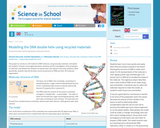
Students learn the basic structural elements of DNA and their 3D molecular organization. Students construct a 3D model of a DNA molecule, using everyday materials.

In this lesson, students will explore how variations in DNA sequences produce varying phenotypes. Students will complete transcription and translation of DNA and RNA and then determine phenotypes produced based on amino acid sequences while completing hands on activity. During this lesson, students will create a factious organism by rolling a dice to determine which DNA sequence it will receive. Students will then perform transcription and translation. Finally, students will determine the phenotype of the organisms by comparing its amino acid sequence to a key that will be provided. Lastly, students will create a picture of the fictitious organism.

This NOVA episode tells the story of Dr. Judah Folkman and his 40-year quest to pioneer a novel form of cancer treatment based on his discovery of angiogenesis.

This interactive animation shows the transcription process of RNA within the plant cell nucleus, followed by the movement of the single stranded RNA out of the nucleus where it is translated into proteins.

In this lesson, students will be able to describe and model the basic process of DNA replication and how it relates to the transmission and conservation of the genetic information. Students will describe the function of models in science and how they are helpful to the study of DNA.